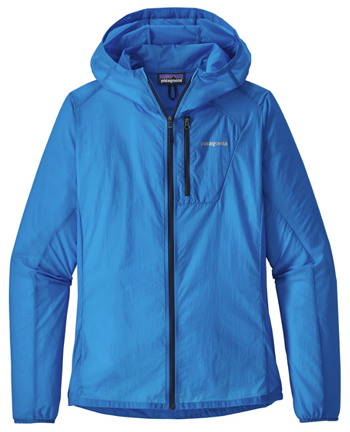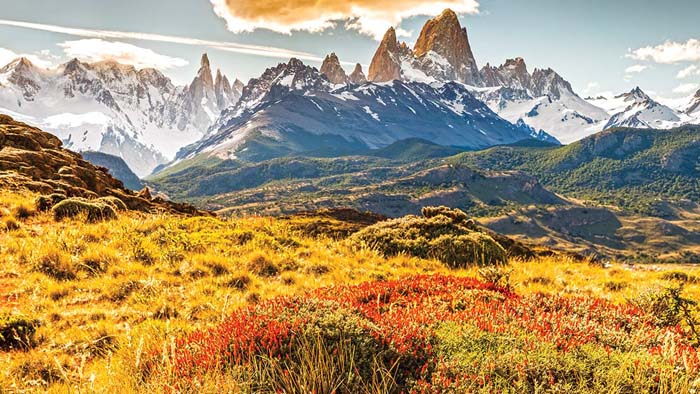All rain jackets are not created equal, and no angler should be without a good one
By Skip Clement
[dropcap]A[/dropcap]lmost every angler of any persuasion – fly, bait or spin has been caught wet and a long way from dry and warm. It’s not fun.
Through hiking the nearby Appalachian Mountain range, Georgia’s rendition, and an endless supply of hiking opportunities of the most spectacular kind, I became friends with an Atlanta couple that both make a living in the outdoor clothing industry.
Sam is a consultant via the industry’s association, and partner Millie works for a distributor and focuses on accounts like Bass Pro Shops/Cabella’s, Dick’s, and other retailers selling them outdoor clothing gear she represents.
They both have more “samples” than seem possible because they offer me tryouts of everything they have – in my size. I get to use pants for a week or two, a jacket for a week or two and so on, and my return favor is writing a review from an anglers’ point of view.
Sam and Millie coached me on price versus value thinking and not weighing equally a traffic ticket with first-degree murder. It was helpful.
What to look for in a jacket
1. Do you want a universal, one fits all occasions? Always think lightweight and think in layers – just like mom told you.
2. Does it have a chest pocket that closes? You might need this? I do.
3. Does it have two-hand pockets and do they close? Yes, you want this.
4. Does it breathe – not add to moisture buildup while active and wearing? No on any rubber or any non-breather or even non-venting self-defeats warm and undoubtedly comfortable. Never buy that feature.
5. Does it have wrist closures? Think fishing in the rain with a cuffless jacket. Your casting arm and even offhand arm (double-hauling or anchor casting) will get soaked through if there’s no wrist closure system like Velcro®. No hiker or even skier needs to worry about this problem.
6. The activity level for an angler could be many times more than the activities level the jacket was designed.
Be sure to try it on and make sure you can move “very” freely bending, stretching, turning, throwing (casting – arms up). Nothing is more frustrating than a straitjacket feeling because it can’t be corrected.
8. A hoodie is essential – even a removable one is fine, although attached makes life easier. It has to accommodate at least a baseball cap – visor.
What are Pits Zips and Torso Zips?
Well, pretty much what it spells out. A way to vent the armpit and a way to vent the torso or both. You can achieve the same effect of venting by layering, but that requires stopping.
Pits zips augment the breathable fabric in your existing jacket and prevent it from becoming overwhelmed when you start to sweat. They also can eliminate the need to take off layers and help avoid added delays when you need to make tracks.
Pit zips, called mechanical venting typically run from underneath your elbow to the middle of your torso, where you sweat the most. Some manufacturers, like Outdoor Research, provide extended pit zips on their hard and soft shell jackets that run from the back of your elbow all the way to your waist, enabling a poncho-like effect that further accelerates the evaporation of sweat when opened.
I think we have to give Outdoor Research some credit: they include TorsoFlo vents on jackets made with breathable fabrics, apparently because they understand the limitations of breathable technology. They’re one of the few technical apparel companies I know of that put vents on jackets made out of Gore-tex Pro and Gore-tex Paclite including the bomber Maximus Jackethttps://www.backcountry.com/outdoor-research-maximus-jacket-mens and the lightweight Furio Jackethttps://www.amazon.com/Outdoor-Research-Mens-Furio-Jacket/dp/B005D1IQVQ.
I own an older model OR jacket with the TorsoFlo venting system, and it works great.” – Sam
Sam and Millie are camper-hikers, and I’m a fly fisher. They have been surprised by some of my criticisms
There are 100s of challenges to consider. We’ve narrowed down the field with the help of Sam and Millie to under $100 for both Men’s and Women’s jackets. They have all the features but not b necessarily the best of the best features – again it’s a traffic ticket, not murder first degree.
Millie and Sam say it’s important not to get stuck in the “Breathability Trap” – $400 a jacket with the latest breathable fabric. But there are super hi-tech jackets in that price range well worth that $400 cost, but the wearer is hiking Mt. Everest or like.
Mechanical venting works, and it’s far less expensive than falling for the emperor’s new clothes. So, go low-tech like layering or look for jackets that have Pit Zips, Torso Zips, or Pit/Torso Zips. They’re more effective and costs much less than “Best Breathable” jacket claims.
 (L) Number one jacket for Men:
(L) Number one jacket for Men:
The Patagonia Houdini retails for $100. This is the best bang for the buck. If money is a concern, but you still want a top quality wind breaker, then think Houdini.
 (R) Number one jacket for Women (Angie Roth’s and Millie’s pick):
(R) Number one jacket for Women (Angie Roth’s and Millie’s pick):
“The Houdini is a ‘go to’ layer for any outdoor adventure because of this compressibility. You can quickly throw this piece in your pack and forget about it until you’re in a pinch. It is comforting to have a wind layer that keeps moisture out when the summer rains begin, and if it gets soaked, it dries in no time. The Patagonia Houdini retails for $100, which is less expensive than most models in our review, and it comes backed with Patagonia’s Worn Wear repair program, so you can get it fixed if need be.” – Millie
Because the Patagonia Houdini is listed as a light running jacket there are no weight adding pockets, just that small chest pocket. And being so light it’s a layering jacket. It super strong suit is keeping you dry even though they say only “water resistant.” It makes up for is it’s no “Zips” with lightness, cost and packability. You can almost squeeze it down to fit a large hand.
Featured image is from Patagonia’s Environmental Impact Statement.


